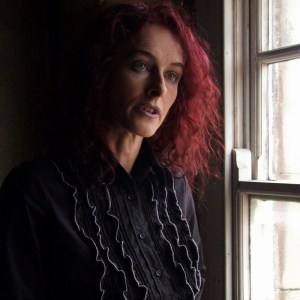
One of my earliest – and happiest memories – is being read to by my grandmother. I curled into her lap as she accomplished the miraculous feat of wrapping her arms around me and holding the book at the same time. Since then I have associated being read to with being hugged.
My favourite story was Tiidu the Piper, an Estonian folk tale. The eponymous hero eats enchanted apples and his nose grows. And grows. And grows. In despair he eats a handful of almonds (what else does one do when despondent?) and his nose shrinks to its previous size. The story continues: he makes his fortune, marries the princess and everyone lives happily etc etc. All terribly Freudian of course, but that’s a different blog. What was memorable was Tiidu’s Nose. I demanded the tale over and over, eager to get to my favourite part: that growing, shrinking hooter. Magical and unquestioned. The power of those apples and almonds was never explained, nor did I ever cry out, hey! That’s impossible!
It. Just. Happened.
In childhood books, it was a short leap from fairy stories to Alice Through The Looking Glass. I never paused to ask how a dressing-table mirror melted and Alice stepped through it into another world. On the contrary, I spent rather too many hours in front of my own looking glass, patting it in the hope that it, too, might soften and allow me to escape to a different universe. My taste for the odd and unusual showed no sign of abating. As a teen and young adult I devoured science fiction and fantasy (Wizards? Rockets? Unicorns? Aliens? Was there a problem? I didn’t think so) and progressed seamlessly to Angela Carter, Jorge Luis Borges, Gabriel Garcia Marquez, Mikhail Bulgakov and Kafka. The list is (almost) endless. Much like the variety of universes I visited. To paraphrase The Red Queen, I grew accustomed to believing six impossible things before breakfast.
A favourite is Kafka’s ‘Metamorphosis’. The hero, Gregor Samsa, wakes up one morning transformed into a giant beetle. How he came to be that way is never explained and more importantly, is of no importance. As a reader I was drawn into his world without question. What intrigued me and compelled me to continue reading was the desire to discover how he coped with his bizarre transformation.
I have always retained this sense of the impossible everyday. In the words of Emily Dickinson, ‘tell the truth but tell it slant’. It’s hardly surprising that this informs my own fiction. For example, my debut novel ‘The Palace of Curiosities’ takes place in a shabby Victorian sideshow populated by a motley crew of strange folk, some of them very strange indeed. It is narrated by Eve, ‘The Lion-Faced Girl’, a young woman born entirely covered in hair. Her story is interwoven by that of Abel, a man with miraculous powers of healing. I don’t feel the need to go into tedious explanations of how Abel heals so quickly, or how Eve can read a person’s life through the lines on their palms. In addition, one of the central characters in my second novel, ‘Vixen’, is a woman who may or may not be a shape-shifter. Things are as they are. I am telling stories, not writing medical textbooks. There’s the rub. In a successful fiction, the important thing is the story.
As a writer and reader of fiction, I revel in ordinary worlds set off-kilter. And I remember the words of Tom Clancy: “Tell the damn story.”
Visit Rosie’s website: http://www.rosiegarland.com/
Follow her on Twitter: https://twitter.com/rosieauthor
FB:http://www.facebook.com/rosielugosi
You can also buy her novels online: The Palace of Curiosities (HarperCollins 2013) and Vixen (The Borough Press 2014)